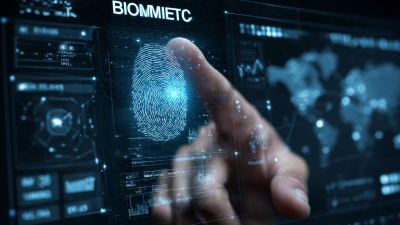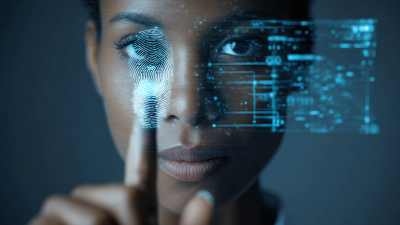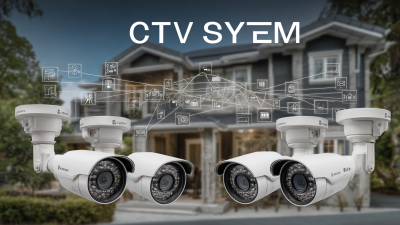Blog
The Future of Security Exploring the Impact of Biometric Access Control on Daily Life
In recent years, the landscape of security has undergone a fundamental transformation, particularly with the rise of Biometric Access Control systems. According to a recent report by MarketsandMarkets, the global biometrics market is expected to reach $59.31 billion by 2025, growing at a CAGR of 14.5% from 2020 to 2025. This surge indicates not just a technological advancement, but a shift in how individuals interact with their environments. Biometric Access Control leverages unique biological traits such as fingerprints, facial recognition, and iris scans for authentication, thereby enhancing security measures across various sectors, including finance, healthcare, and public safety.

As these systems become increasingly integrated into daily life, from mobile devices to smart home technologies, understanding their implications on privacy, accessibility, and convenience is critical. This exploration into Biometric Access Control will illuminate its potential to redefine security protocols and societal interactions in the near future.
Impact of Biometric Access Control on Personal Privacy: A Double-Edged Sword
The implementation of biometric access control systems has become increasingly prevalent in daily life, offering enhanced security measures that rely on unique human traits such as fingerprints, facial recognition, and iris scans. While these advancements promise to fortify personal and organizational security, they also raise significant concerns regarding personal privacy. Individuals may unknowingly sacrifice their privacy for the convenience of seamless access, as biometric data can be easily collected and stored without clear consent or adequate protection.
Moreover, the use of biometric systems presents a double-edged sword; while they can deter unauthorized access and enhance identity verification, they also create vulnerabilities. Biometrics are immutable, meaning once compromised, an individual has no means to change their biological traits unlike a password or PIN. This inherent permanence raises the stakes for identity theft and surveillance, leading to potential misuse of sensitive information. As society embraces this technology, the balance between enhanced security and personal privacy will require careful consideration and robust regulations to ensure that privacy rights are not eroded in the pursuit of safety.
Adoption Rates of Biometric Technology in Various Industries: Statistics and Trends
The adoption of biometric technology across various industries is witnessing a significant uptick, driven by the increasing need for enhanced security measures. The U.S. automotive biometric market, for instance, is projected to experience a compound annual growth rate (CAGR) of 16.8%. This growth is largely attributed to the development of advanced identification methods such as fingerprint, facial recognition, voice recognition, and iris recognition technologies. Such innovations not only streamline the user experience but also provide robust security against unauthorized access.
Furthermore, biometric systems are becoming increasingly integral in the financial sector, particularly with the rise of digital wallets. As consumers seek more convenient and secure payment solutions, the integration of biometric verification methods in mobile payments is set to transform transactional security. Statistics indicate that the growth of digital wallet adoption is reshaping how individuals engage with financial services, making biometrics a necessary component to ensure user trust and combat fraud in an era marked by rising digital threats.
The Future of Security: Adoption Rates of Biometric Technology in Various Industries
Evaluating the Efficacy of Biometric Systems: Security vs. Usability Metrics
Biometric access control systems are rapidly transforming the security landscape, but a critical evaluation of their effectiveness based on usability metrics is essential. According to a report by MarketsandMarkets, the global biometric system market is expected to grow from $30.58 billion in 2020 to $67.9 billion by 2025, highlighting the increasing reliance on biometric technologies. However, the efficacy of these systems relies heavily on user experience, as a balance between security and usability is paramount. Studies indicate that approximately 60% of users are less likely to adopt biometric solutions if they perceive them as inconvenient or complicated.
In assessing biometric systems, one must consider both security and usability metrics. While biometric authentication methods, such as fingerprint and facial recognition, offer superior security levels compared to traditional passwords—boasting a 99.9% accuracy rate according to a study by the National Institute of Standards and Technology (NIST)—the user interface and overall experience can hinder their acceptance. A survey by Pew Research Center found that 45% of adults in the U.S. are uncomfortable with facial recognition technology due to privacy concerns, illustrating the need for a design that not only prioritizes security but also addresses the usability and comfort of potential users. Balancing these metrics will be crucial for the widespread adoption of biometric systems in daily life.
The Future of Security: Exploring the Impact of Biometric Access Control on Daily Life
| Biometric System Type | Security Rating (1-10) | Usability Rating (1-10) | Implementation Cost (USD) | Daily Life Impact (%) |
|---|---|---|---|---|
| Fingerprint Recognition | 8 | 9 | 100 | 75 |
| Iris Recognition | 9 | 7 | 200 | 65 |
| Facial Recognition | 7 | 8 | 150 | 70 |
| Voice Recognition | 6 | 6 | 50 | 60 |
| Vein Pattern Recognition | 9 | 8 | 250 | 80 |
The Role of Biometric Authentication in Smart Home Technologies: A Growing Necessity
The increasing integration of biometric authentication in smart home technologies marks a significant shift in how we secure our living spaces. As consumer demand for convenience and enhanced security rises, the smart lock market is projected to surpass USD 16.47 billion by 2033. This transformation is fueled by innovations that make everyday interactions more seamless and protected. Biometric systems, such as fingerprint and facial recognition, offer a level of personalization and security that traditional keys and codes simply cannot match.
Tips for choosing a smart lock include considering the ease of installation, compatibility with existing home systems, and the reliability of the biometric features. Ensuring the smart lock has robust security measures against hacking is vital. Additionally, consumers should look for locks that offer multiple authentication methods, combining biometrics with passwordless options for added flexibility.
With projected growth in the mobile biometrics and next-gen authentication markets, advancements in these technologies are set to revolutionize daily life. By 2034, the passwordless authentication market is expected to reach USD 82.50 billion, indicating a strong trend towards secure, user-friendly solutions. Homeowners looking to adopt these innovations should stay informed about the latest developments to make educated decisions for enhanced security in their smart homes.

Future Advancements in Biometric Security: AI Integration and Beyond
Advancements in biometric security are rapidly transforming the way we interact with technology and access our personal spaces. With the integration of artificial intelligence (AI), biometric systems are becoming smarter and more efficient. For instance, AI algorithms can analyze biometric data—like facial recognition, fingerprints, and iris scans—at unprecedented speeds, enhancing security while minimizing false positives. This level of accuracy not only improves individual safety but also streamlines user experience, as access can be granted almost instantaneously.
Beyond mere convenience, the future of biometric security holds potential for revolutionary applications in various sectors. In the banking industry, AI-powered biometric authentication could replace traditional passwords, significantly reducing the risk of identity theft. Similarly, smart homes equipped with biometric access control can ensure that only authorized individuals gain entry, enhancing residential security. As these technologies evolve, they may also incorporate multi-modal biometric systems, which utilize a combination of traits for enhanced accuracy, setting a new standard for secure access in our daily lives. The continued integration of AI in these systems promises a future where security is not just robust but also seamlessly embedded in our everyday routines.

Related Posts
-

How to Enhance Security and Efficiency with Biometric Access Control Systems
-

Understanding Global Industry Standards for the Best Biometric Access Control Solutions
-

Ultimate Checklist for Selecting the Best Biometric Access Control Solutions for Global Buyers
-

How to Choose the Right Access Control System for Your Global Business Needs
-

Your Ultimate Checklist for Choosing the Best Home CCTV System for Global Buyers
-

10 Smart Tips for Choosing the Right Ip Camera System
